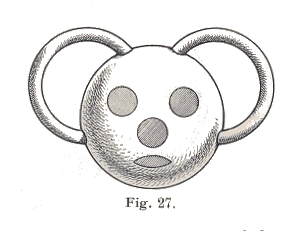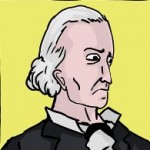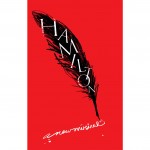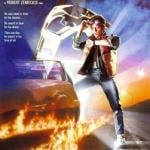Ok, it turns out there have been so many cool sources of internet musings on Captain America: The Winter Soldier that this week’s quick takes will alternate CA:TWS links with unrelated ones.
First up, a piece that does a great job explaining why Captain America is my favorite Avenger, “Grimdark is lazy, good is hard work and Jewish American superheroes”
Basically (right?) Captain America was created by two Jewish-Americans to shame the US into properly fighting Hitler.
Like, I am Captain America, the America you say you want to be, and I challenge you to put your money where your mouth is and actually do something about it. And yes he’s over-the-top and tacky but that’s where the challenge is, right? The chest-thumping American patriotism says “We are good and spread liberty! And also freedom!” and Captain America is like “great! I am that, and I have to point out you are not actually doing that”.
AND I think this is Jewishly on purpose, and here’s why:
Judaism has this important phrase/concept/slogan/life motto from the third-century-ish text Pirkei Avot, which goes: Lo alecha hamlacha ligmor (it’s not to you to complete the work of repairing the world) v’lo atah ben chorin l’hivatel mimena (but neither may you desist from it). You won’t be able to fix the world by yourself, or in your lifetime, but that doesn’t absolve you of responsibility to work towards it.
I feel like grimdark/anti-heroes are a response to the fact that the world is neither good nor moral, like “well if the world isn’t like that, I won’t be either”. But they’re also excuses for not working towards fixing the world: I won’t bother because it’s all fucked anyway. Lo alecha and Captain America say, yes, it is fucked, but you still have to work towards fixing it. And yes, it’s hard, that’s why it’s called work.
In one of the Python classes I’ve attended in DC, it finally occurred to me to ask what coding languages exist that aren’t based in English. It’s awfully convenient for me that for-loops just require me to type “for,” a word I already know, and not to learn “pour” or some other foreign word in addition to foreign syntax. The instructor wasn’t aware of any popular, non-English-based programming languages, but I did finally run across one in Arabic. (Though it’s more an art installation than a commonly used language).
I realized the kind of punctuation that mainstream languages depend on are very disorienting set against Arabic. Curly braces, semicolons, commas, and the like would have to go.
I settled on a syntax based on the Lisp family of languages, which use nested sets of parentheses exclusively as their syntax. Lisp is also one of the oldest language families in programming, dating back to the late 50s, and modern language still lack much of the expressive power Lisp had way back when. Modern variant exist and vary in usage and popularity, too. I liked using Lisp as a base because it connected قلب to the history of computer science in a very real way. The preceding code is Hello World.
I have been watching this Captain America fanvid so many times since I found it this week. Enjoy.
When a blog is subtitled “Swordsman, writer, entrepreneur,” I can’t really say I’m surprised to discover anecdotes as fun as this:
I am often asked who draws the best swordfights, and it is a tricky question to answer. We have some great swordfighting graphic artists here in Finland: my favourite is Hannu Lukkarinen, not least as he came to me for training just to improve his artwork. The Art of Swordsmanship is to strike first. To do this your actions should be as small and quick as possible while still getting the job done. The sword is a labour-saving device, as it is so much easier to kill someone with one than without. But Swordfighting Art is a whole other story. It has to look good on the page, to an uninformed audience. It has to look like it would do the damage, and it doesn’t matter if the actions are way too big. On one of my consultancy jobs for a swordfighting computer game they had me put on a motion-capture suit and do various sword drills. A year later when I was back helping these game designers work out the underlying logic of what action counters what, I saw the game footage and said “that isn’t me! It’s all over the place!” and they told me that the actions I had made for them looked like nothing on the screen. Nobody would believe that they would work, as they seemed to take no effort. “That’s the fucking point” I said. But next time I’ll ham it up for them.
The next vid is focused specifically on The Winter Soldier, and its creator said, “After hearing chaseholfelder’s chillingly beautiful rendition of the Star-Spangled Banner in the minor key, I just had to make this.”
And I just had to share it. (Mblume gets the hat tip for all the CA:TWS links so far)
Over at Futility Closet, there are several very amusing examples of index-related jokes of the type below:
German mathematician Erich Bessel-Hagen was often teased for his protruding ears.
In 1923 his colleague Béla Kerékjártó published a book, Vorlesungen Über Topologie, whose index lists a reference to Bessel-Hagen on page 151.
That page makes no mention of Bessel-Hagen, but it does contain this figure:
And, finally, rounding out the Captain America links is Max Gladstone. Here’s what he has to say in “Captain America and Commodity Fetishism in the MCU.”
All of the Avengers of the MCU movies so far have objects that stand in for them, items they literally or figuratively become. Tony Stark is the most obvious: I am Iron Man, he proclaims at the end of the first movie, identifying himself with the armor in his own eyes and the eyes of the world. And he repeats the claim in the third movie, despite having spent most of the film outside of the suit. Odin’s magic even reifies this association for Thor, via inscription: “Whosever holds this hammer, if he be worthy, shall possess the power of Thor.” Thor’s attempt to earn his own identity—his kingship—back is synonymous with his attempt to earn the right to bear his hammer again.
Captain America was transformed by the super-soldier serum, sure, but that transformation made him super-Steve. The shield makes him Cap—as is repeated over and over in the comics, where the shield stands metonymically for the entire Captain America identity. When Steve stops being Cap, he’s said to be putting down the shield; when he starts being Cap again, he’s taken up the shield once more. “When you’re going to war,” as Steve says in Winter Soldier, “you have to wear a uniform.”
Even supporting heroes in the Cinematic Universe have their own objects: the Widow’s stings, the Falcon’s wings, Hawkeye’s bow. (And Darcy’s camera! And my axe!) The Hulk is the one great exception to this rule, though I think he actually supports the argument in a twisted way: because his power is internal, it’s presented as confusing and terrifying, and Hulk himself as only a borderline hero. Also, the Hulk itself is (in movie and comics alike) presented as a sort ofpsychological object for Banner: an entity on which Banner hangs his own damage.
Oh, and by the way, Max Gladstone’s newest book in his Craft Sequence, Full Fathom Five, is coming out soon. Tor has posted the first five chapters of the novel online here, Max wrote a screenplay for a book trailer (to be used in the world where fantasy novels get funding to do effects-heavy trailers), and you can read my two-part Q&A with him here and here.
For more Quick Takes, visit Conversion Diary!














